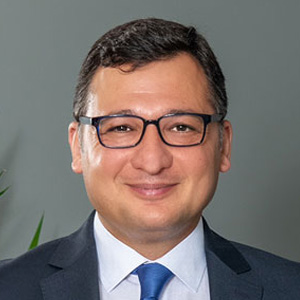Recent developments in satellite technologies have revealed the necessity of radical change in the technologies used in the ground segment. If the ground segment, which is critical for the effective use of satellite technologies in the military and commercial field, cannot have a scalable and agile structure at the expected level in the upcoming years, investments in the space segment will inevitably be at risk. Dramatic developments in the space segment in recent years include:
- Considerable decrease in cost per bit due to the HTS (High-Throughput Satellites),
- Satellite Internet service, which has become more accessible and widespread as a result of mega satellite constellations operating at medium/low altitudes,
- Satellites that can be quickly reconfigured for many different tasks due to software-defined payloads,
- Launch services that have become affordable with reusable rockets.
Considering all these developments, the need to move to a scalable and flexible virtualized network environment in a short period of time in the ground segment is quite clear. If traditional technologies and methods continue to be used in the ground segment despite the current progress, flexibility and scalability; barriers will not be overcome, and the returns of innovation in the space segment will be substantially limited. For the scalable and flexible virtualized location segment, we can list the key technologies widely used by other industries as follows:
- Cloud Computing: Cloud computing platforms, which have been widely used in the business world in recent years, lead to significant savings in costs and lead up businesses to carry out more agile processes.
- IaaS (Infrastructure-as-a-Service): Leading satellite and teleport operators have started to expand their managed services with IaaS technologies.
- Virtual Network Functions (VNF): By means of virtual network functions, hardware-independent applications take the place of specific hardware produced for processing analog signals or for different purposes.
- Digitizing the RF Chain: Digitizing the RF signal flow between the antenna and the ground station makes the existing physical layer much more flexible, result in cost reductions.
- Big Data Analytics: The ability to extract actionable insights from large amounts of various digitized data transmitted over the network gives virtual platforms an information advantage.
It seems precise that, the next generation satellite ground networks developed using the technologies listed above will provide scalability, flexibility and durability and will challenge traditional teleport design concepts. A fully digital and virtualized ground infrastructure can make the most of dynamically configured space segment resources and enable impeccable integration of satellite technology with broader telecom and cloud ecosystems. Ensuring the scalability, flexibility and durability of the ground network is much easier if the network is designed to operate in a standard digital environment. To create a standardized digital environment, it is necessary to transform satellite ground networks, which are commonly composed of special hardware components, into a software-defined, flexible and expandable virtual architecture. The key process here will be, to pass digital signal processing functions to scalable commercial hardware while investing in modern software capabilities for satellite ground systems.
Hakan Savaşan
R&D Director
hakan.savasan@profen.com
www.profen.com


